Disclosure: We may earn commissions if you purchase products after clicking on a link from our site.
Are you interested in learning how to hunt with bows? If so, you have come to the right place! In this guide, we will teach you everything you need to know about hunting with bows. We will discuss the different types of bows available and the equipment you will need to get started.
We’ll also go over some basic safety tips so that you can stay safe while out in the field. Finally, we’ll provide a few tips on how to improve your accuracy and make sure that your shots are always on target.
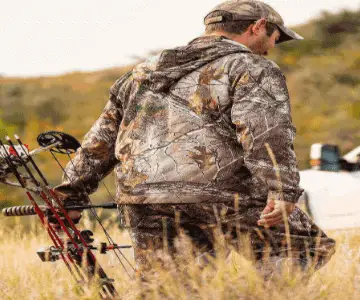
Table of Contents
What Do You Need To Bow Hunt?
1. A bow
A bow is the quintessential tool for bowhunting, serving as the primary instrument to propel arrows towards the intended target. Available in various designs, including recurve, compound, and traditional longbows, each type offers distinct advantages and characteristics suited to different hunting styles and preferences.
Recurve bows feature a simple, elegant design with limbs that curve away from the archer when unstrung, providing a smooth draw and release. Compound bows incorporate pulleys or cams to leverage mechanical advantage, resulting in greater arrow velocity and reduced holding weight at full draw. Traditional longbows harken back to ancient hunting practices, offering simplicity and a connection to archery’s historical roots.
Regardless of the type, bows require skillful mastery and consistent practice to achieve accuracy and proficiency in the field. Bowhunters carefully select bows based on factors such as draw weight, draw length, and overall feel to ensure optimal performance and success during hunts.
2. Arrows
Arrows are indispensable tools for bowhunting, serving as the projectile launched by the bow towards the target. These shafts, traditionally made from materials like wood, aluminum, carbon, or a combination, vary in length, diameter, and weight to suit different bow types and hunting scenarios.
Fletching, typically made from feathers or plastic vanes, stabilizes the arrow’s flight, ensuring accuracy and consistency. At the front end of the arrow is the broadhead, the sharp tip responsible for penetrating the target and causing lethal damage. Bowhunters meticulously select arrows based on factors such as spine stiffness, weight, and tip type to optimize performance and achieve ethical kills. With proper care and maintenance, arrows can be reliable companions for hunters, aiding in harvesting game and honing archery skills.
3. A release
A release aid is an essential accessory for bowhunters, providing precise control over the arrow release and enhancing shooting accuracy. Unlike traditional fingers, which can introduce inconsistencies in arrow flight, a release aid ensures a smooth and consistent release, minimizing torque and improving shot consistency.
Typically worn on the archer’s wrist or handheld, release aids come in various designs, including wrist-strap releases, thumb-trigger releases, and back-tension releases, each offering unique benefits suited to individual preferences and shooting styles. By eliminating human error and promoting proper form, a release aid enables bowhunters to achieve tighter arrow groups and increased effectiveness in the field, ultimately enhancing their hunting experience and success.
4. A target
While a target may not seem like an essential item for bowhunting, it plays a crucial role in honing an archer’s skills and ensuring accuracy before heading into the field. Practicing regularly on a target allows bowhunters to refine their shooting technique, develop muscle memory, and improve their aim at various distances.
Additionally, targets help bowhunters test different arrow types, adjust bow sights, and experiment with shooting angles and positions. Whether it’s a traditional bullseye target, 3D animal target, or bag target, having a designated practice area with a reliable target allows bowhunters to simulate real-life hunting scenarios, build confidence, and increase their chances of making clean and ethical shots when hunting game.
5. A quiver
A quiver is an indispensable accessory for bowhunters, providing a convenient and secure way to carry arrows during hunts. It attaches to the bow or the archer’s body, allowing quick and easy access to arrows when needed.
Quivers come in various styles, including hip quivers, back quivers, and bow-mounted quivers, each offering unique benefits depending on the hunter’s preferences and hunting style. Besides holding arrows, quivers often feature additional pockets or compartments for storing small accessories like broadheads, releases, or rangefinders, ensuring all essential gear is within reach during a hunt.
By keeping arrows organized and readily accessible, a quiver enhances a bowhunter’s efficiency, mobility, and readiness in the field, ultimately contributing to a successful and enjoyable hunting experience.
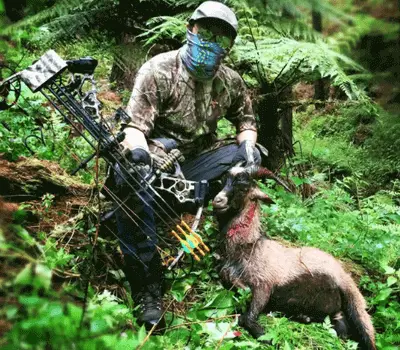
Types of Bows
1. Compound Bows
Compound bows, unlike recurve bows, have many parts. They have a system of pulleys and a bowstring that meanders between them. The force that you have to exert to draw back the string is greatly reduced once it has been pulled halfway thanks to the pulley system. When you are learning to hunt, compound bows are a good choice. We did a review of the best recurve bows and you can read it from this link.
Compound bows are a modern and technologically advanced type of bow widely used in archery and bowhunting. They are characterized by their intricate pulley and cam system, which provides a mechanical advantage, allowing the archer to hold the bow at full draw with less effort compared to traditional bows.
This feature, known as let-off, enables shooters to achieve higher draw weights and store more energy, resulting in faster arrow speeds and increased accuracy. Compound bows typically have shorter limbs and a more compact design, making them maneuverable and well-suited for hunting in tight spaces or from treestands.
They also offer adjustable draw lengths and draw weights, catering to archers of different sizes and skill levels. With their combination of power, precision, and versatility, compound bows have become the preferred choice for many archers seeking optimal performance in various shooting scenarios.
2. Recurve Bows
Recurve bows have a simple design with a pair of curved limbs, a handle, and a bowstring that connects the ends of the limbs. With their simple design, recurve bows have fewer moving parts compared to compound bows. Recurve bows are lightweight and require little maintenance.
Recurve bows are a classic and versatile type of bow that has been used for centuries in archery and hunting. They are characterized by their distinctive curved limbs that bend away from the archer when the bow is unstrung, giving them their “recurve” shape.
Recurve bows store energy more efficiently than straight-limbed bows, resulting in faster arrow speeds and greater power. Unlike compound bows, recurve bows do not have a let-off feature, requiring the archer to hold the full draw weight throughout the draw cycle. This aspect promotes strength and endurance in the archer.
Recurve bows are favored by traditional archers and Olympic athletes alike for their simplicity, reliability, and elegance. They come in various sizes and draw weights, catering to archers of different ages, sizes, and skill levels. Recurve bows are prized for their smooth shooting characteristics and are often chosen by those seeking a more traditional archery experience or competing in traditional archery tournaments.
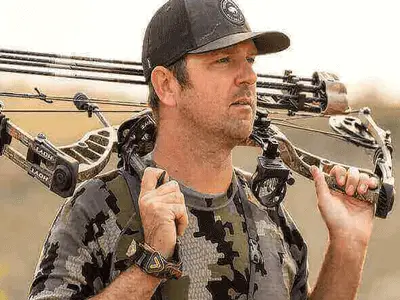
Compound Bow vs Recurve Bow
| Compound Bow | Recurve Bow |
|---|---|
| Has more parts | Has fewer parts |
| Heavyweight | Lightweight |
| High maintenance | Low maintenance |
| Ideal for beginners | Not ideal for beginners |
| Technologically advanced | Traditional bow |
| For hunting larger game | For hunting smaller game |
| Not ideal for target practice | Ideal for target practice |
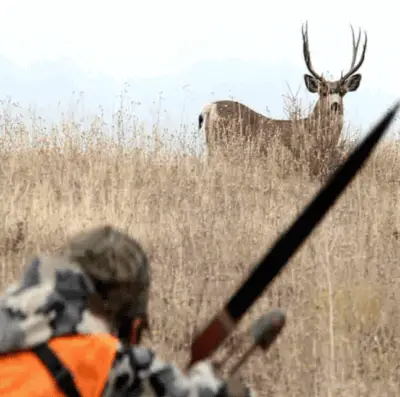
Factors To Consider When Choosing A Bow
1. Draw weight
The draw weight is the force needed to be put on the string to draw the bow back. A good rule of thumb is to opt for a bow with a draw weight between 20 to 30 pounds.
Draw weight is a crucial factor to consider when selecting a bow, as it determines the force required to pull back the bowstring to full draw. It is typically measured in pounds (lbs) and refers to the amount of resistance the archer must overcome to draw the bow.
The appropriate draw weight depends on factors such as the archer’s strength, skill level, and intended use of the bow. A bow with a higher draw weight requires more strength to pull back but delivers greater arrow speed and kinetic energy, making it suitable for hunting larger game or shooting longer distances.
Conversely, a lower draw weight bow is easier to draw and may be more suitable for beginners, youth, or those with less upper body strength. It’s essential to choose a draw weight that allows for comfortable shooting while still providing sufficient power and accuracy for the intended purpose, ensuring an enjoyable and effective archery experience.
2. Length of arrow
The length of the arrow determines how far out you can shoot the target. A good rule of thumb is an arrow length that is between 24 to 30 inches.
The length of the arrow is a critical factor to consider when selecting a bow as it directly impacts the performance and accuracy of the shot. The arrow length should be appropriately matched to the draw length of the bow, ensuring optimal arrow flight and energy transfer upon release. Arrows that are too short may not provide sufficient stability or accuracy, while arrows that are too long can negatively affect the bow’s efficiency and speed.
Additionally, the length of the arrow also influences the spine or stiffness of the shaft, which must be matched to the draw weight and bow type for proper arrow flex during flight. Therefore, selecting arrows of the correct length based on the archer’s draw length and the specifications of the bow is essential for achieving consistent and precise shooting results.
3. Type of bow
There are two main types of bows- the recurve and compound bows. The type of bow is a fundamental factor to consider when selecting the right bow for an individual’s hunting or archery needs. Two primary types of bows are commonly used: compound bows and recurve bows.
Compound bows feature a system of pulleys and cables, allowing for a mechanical advantage that reduces the amount of force needed to hold the bow at full draw. This makes compound bows more suitable for hunters who require longer holding times or higher draw weights.
Recurve bows, on the other hand, have a more traditional design with limbs that curve away from the archer when unstrung. They offer simplicity, reliability, and elegance, making them popular among traditional archers or those seeking a more authentic shooting experience.
Choosing between compound and recurve bows depends on factors such as personal preference, shooting style, hunting regulations, and intended use, with each type offering distinct advantages and considerations for the archer.
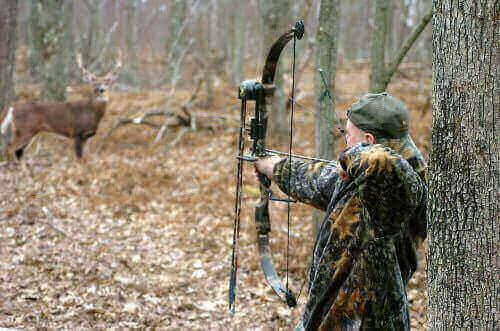
How To Hunt With Bows
1. Place the arrow on the bowstring while putting the shaft on the arrow rest.
2. Securely hold the bow in your non-dominant hand while holding the bowstring and arrow (one-act) with your dominant hand.
3. With your back straight, bring the bow in front of you to cheek level, take a deep breath, exhale, and pull back the bowstring.
4. Line up your eye with the arrow, the sight pin, and the target.
5. Then let go of the arrow.
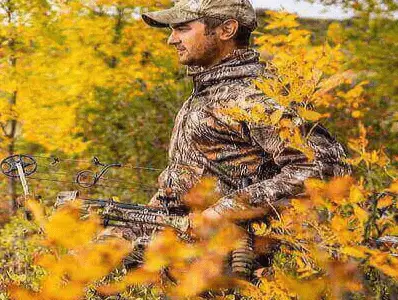
Bowhunting Tips
1. Get comfortable with your bow. When you want to learn how to hunt with bows, the first thing is to really get a feel for the bow and arrows.
2. Always be aware of your surroundings and know where you are in relation to your target.
3. Practice regularly. The more you practice, the more comfortable you will become with shooting a bow.
4. Practice shooting in light and dark conditions. This will prepare you for any situation you may encounter while hunting.
5. Find a spot for target practice. It should be a spot where you can shoot from different angles and distances.
6. Consider taking a few lessons from a professional before heading into the woods or getting a mentor.
7. Never shoot at an animal that is moving directly toward you.
8. Start by shooting from a distance that you are comfortable with. Gradually increase the distance as you gain more confidence with your shooting.
9. Be patient and wait for the perfect shot; don’t rush the shot. A poorly taken shot will result in an unethical kill.
10. Remain calm and composed when the target is within your sights. You will make a clean shot and take down the target if you maintain your composure.
11. Always wear clothing to blend with the area and also wear some bright clothing so other hunters can easily see you.
12. Get a license before you go hunting and follow the rules and regulations of the area.
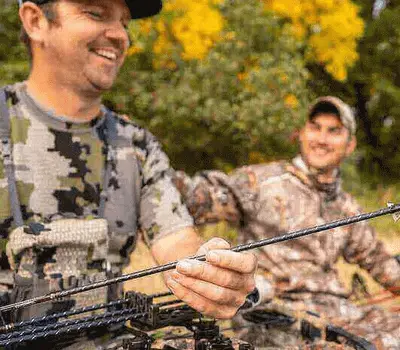
The Bottom Line
Hunting with a bow can be exciting and rewarding. It requires regular and consistent practice to develop the skills to hunt with a bow. However, once you have mastered it, hunting with a bow will pay you dividends.
In this article, we discussed how to hunt with bows, tips for hunting with bows, how to choose a bow, the different types of bows, etc. To help you take more deer home during the deer hunting season, we discussed the best whitetail deer hunting tips that you can read from this link. You can also read how to maintain your crossbow and how to track deer after the shot.